Epson is a legendary Japanese brand of printers and projectors, once part of the Seiko watch company. The company has been active in Germany since the 1970s. J-BIG spoke to Henning Ohlsson, Managing Director of Epson Deutschland GmbH until the end of 2023, about his 20 years of experience with the company, how Epson developed into a specialist for printing solutions, what other product areas the company covers today and where its strong commitment to the environment comes from.
J-BIG: You will be retiring at the end of the year after two decades with Epson – you have a long history and a wealth of experience with the company, and you are predestined to tell the whole story. So let’s start at the very beginning: When and why did Epson start?
Henning Ohlsson: Our roots lie in the watch industry with Seiko, which is still our parent company today – officially Epson trades as Seiko Epson Corporation. Seiko’s history began in 1942 with workshop production. The company, then known as Daiwa Kogyo Ltd, was founded by Hisao Yamazaki and initially employed just nine people. At first, the factory produced large numbers of watches by hand. The high-precision mechanical movements required a high level of manufacturing skill and this Japanese principle of Monozukuri, the art of manufacturing with a strong focus on precision and quality, is the cradle of today’s high-tech company.
Daiwa Kogyo became Suwa Seikosha by merging with an outsourced factory of another watch manufacturer. This company produced high-precision digital timepieces for the 1964 Tokyo Games. In fact, digital timekeeping for the Games was virtually invented by Suwa Seikosha, and this invention raised the question of what to do with the digitally displayed results and how to record them. Digital printers were needed, but they had not yet been developed.
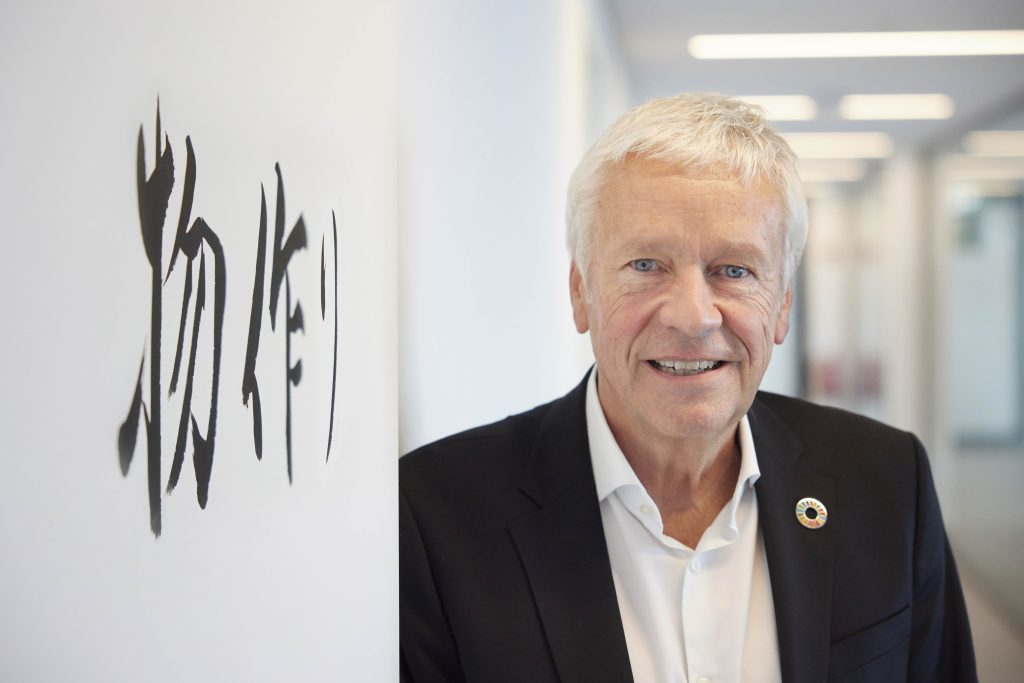
The compact and precise technologies of the watch industry proved to be very helpful in the development, and in September 1968 the first digitally controlled printer and the world’s first miniature printer was born, the model EP-101, “Electronic Printer-101”. It worked by connecting the timer to a roller printing unit. The EP-101 was first used at the 1968 Games in Mexico and was a huge success. It ushered in a new era of digital printing: The printer was light and small enough to fit in the palm of a hand. It also used one-twentieth the energy of conventional printers. The EP-101 exceeded all expectations and was soon installed in many desktop computers. In total, 1.44 million units were sold. The technology behind the EP-101 laid the foundation for many other technologies and inventions.
The development of the EP-101, a printer connected to a timer to make “time visible”, led to what is now one of Epson’s core businesses: printing solutions. In the early 1970s, the successor model to the EP-101 was introduced under the name “Son of EP-101”. This led to the name combination for our company in 1975: EP for Electronic Printer and Son for the “son” of the EP-101: Epson. Epson was initially established as a brand with the aim of developing new printers and other information devices and bringing them to the world market. The brand name reflects our desire, just as the EP-101 was a major breakthrough and brought new value to our customers, to continue to create innovative products and services that enrich our customers in many areas.
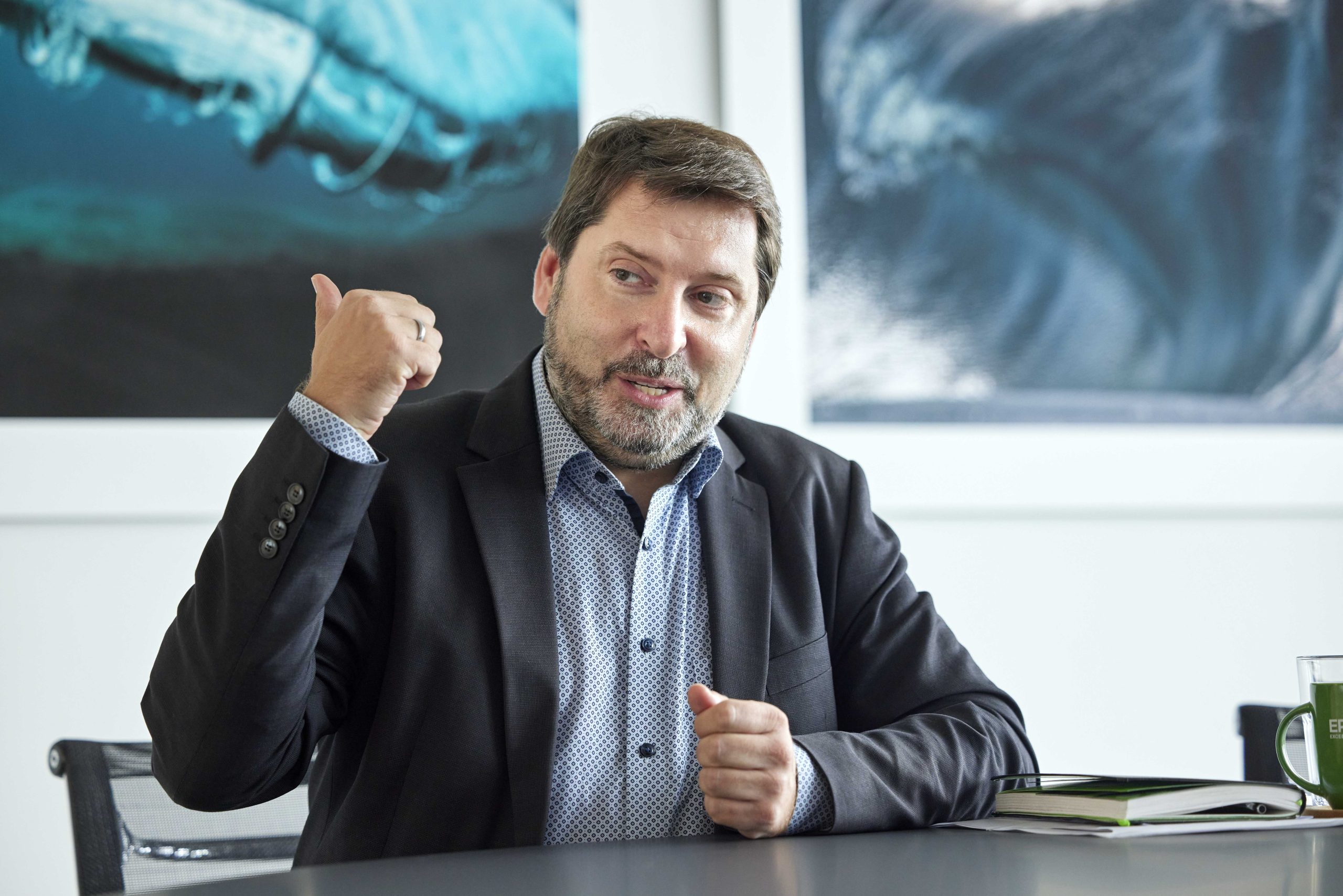
J-BIG: So Epson started out as a Seiko brand and then became an independent company?
Henning Ohlsson: Yes, that’s right. Epson was first introduced as a sub-brand and the watch business was still at the forefront. Epson then branched out into different technologies and expanded its portfolio, but the first digital printer was crucial to our development. Due to its rapid growth, Epson became a subsidiary of Suwa Seikosha, and in 1985 Epson Corporation merged with Suwa Seikosha to form Seiko Epson Corporation.
Because printers are where Epson came from, the company is still closely associated with them. And the printer business is still a strong pillar of our company, accounting for over 50 percent of global sales. However, one of Epson’s unique selling points is that it has never bought in technology. Everything we develop and market around the world is our own technology with our own patents. This is backed up by a huge research and development force. We spend 1.3 millionen Euro per day on research and development.
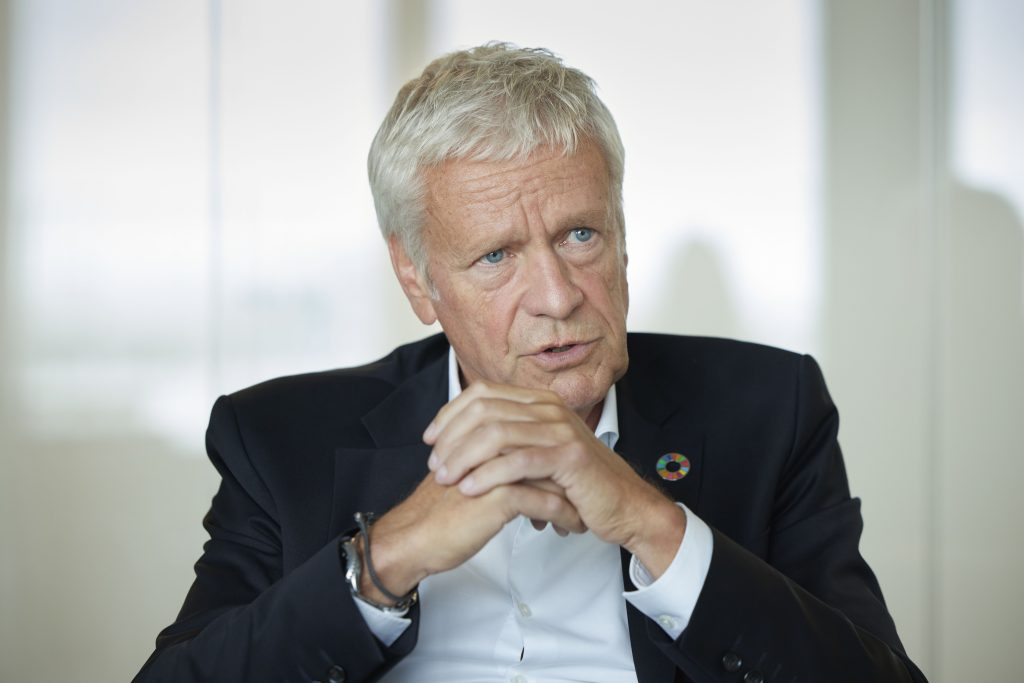
J-BIG: What other technologies and product areas have emerged alongside the printers?
Henning Ohlsson: One was the creation of the projection product area. With the advent of Microsoft programmes such as PowerPoint in the 1980 and 90s, there was a need to visualise computer content in a larger format, and therefore a need for projectors. The first projector was introduced in 1989. 3LCD technology was developed by Epson: by shining light through three LCD panels in the primary colours (red-green-blue), the image on the screen is created with pixel precision, controlled by mirrors. Even today, this is a leading projection technology that delivers outstanding images. Our aim has always been to provide a great image in the business sector. This has evolved and is no longer limited to the business world. We now have a strong presence in the public, art and film projection sectors. Demand has continued to grow – today, for example, projectors are indispensable at concerts. The projector segment accounts for almost a fifth of total sales worldwide, and Epson has been the global market leader in the projector business since 2001.
Our third pillar is industrial solutions. Printing is more than just printing photos or office documents. In the industrial sector, we have developed technologies for textiles, labels and large-format films, among others, that move away from traditional analogue processes to digital processes that are less harmful to the environment. In traditional analogue production, water consumption in large format printing is enormous and there are screens that need to be exposed and washed. Especially in the textile sector, this is a rather “dirty” process. The digital sector is therefore a huge market for us.
Another area is robotics: we have developed robotic technology for high-precision applications from our own needs in the watch industry. This technology was then brought to market for other industries such as electronics. Since the introduction of the first Epson robot in 1980, we have been at the forefront of automation and have developed many industry firsts, including PC-based controllers and compact SCARA robots.
Sustainability plays a major role in all these areas, and environmental technologies are therefore also an important topic in our company today. Epson has set itself the goal of becoming CO2-negative and “underground resource-free” by 2050. The latter means leaving mineral resources where they belong. This is particularly important in our industry, as IT and electronics still use many raw materials that have to be extracted from the earth. This is not a new goal for us: Epson has always been committed to the responsible use of resources and the protection of nature.
J-BIG: Tell us more. Where does Epson’s strong environmental awareness come from?
Henning Ohlsson: As a Japanese company, Epson has a close relationship with nature – it aims to live in harmony with nature and takes a very responsible approach to the impact of its own production on the environment. Epson’s headquarters are located on the shores of Lake Suwa in Nagano Prefecture. It was important to our founder, Hisao Yamazaki, who felt very close to his homeland, that this lake should never be polluted. He wanted it to remain so clean that it could be used as drinking water.
The lake was once the site of the rare natural phenomenon of Omi-watari. The reason for this natural phenomenon is that the lake has a thermal spring beneath its surface, so the deep water is warm and circulates even when the surface is frozen. Due to the shallow depth of the water, the pressure on the ice causes linear uplift of 30 cm or more. However, due to global warming, this phenomenon has not occurred in recent years. This has heightened Epson’s awareness of the importance of using new technologies to create change in the here and now.
Awareness of sustainability is therefore firmly anchored in our DNA, and we back up this commitment to the environment with concrete actions. As early as 1993, for example, Epson decided to ban CFCs and greenhouse gases from production and to switch to more environmentally friendly processes.
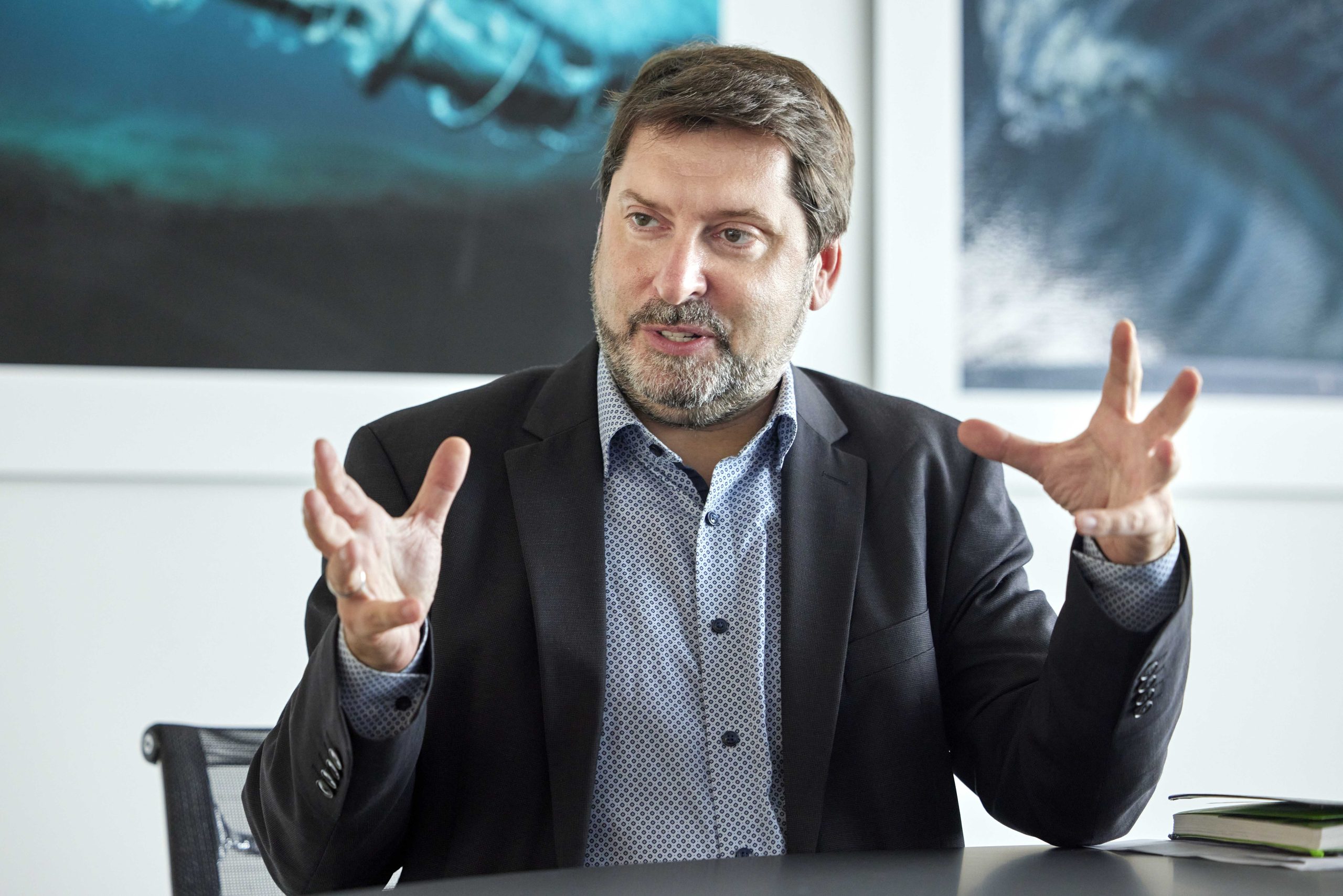
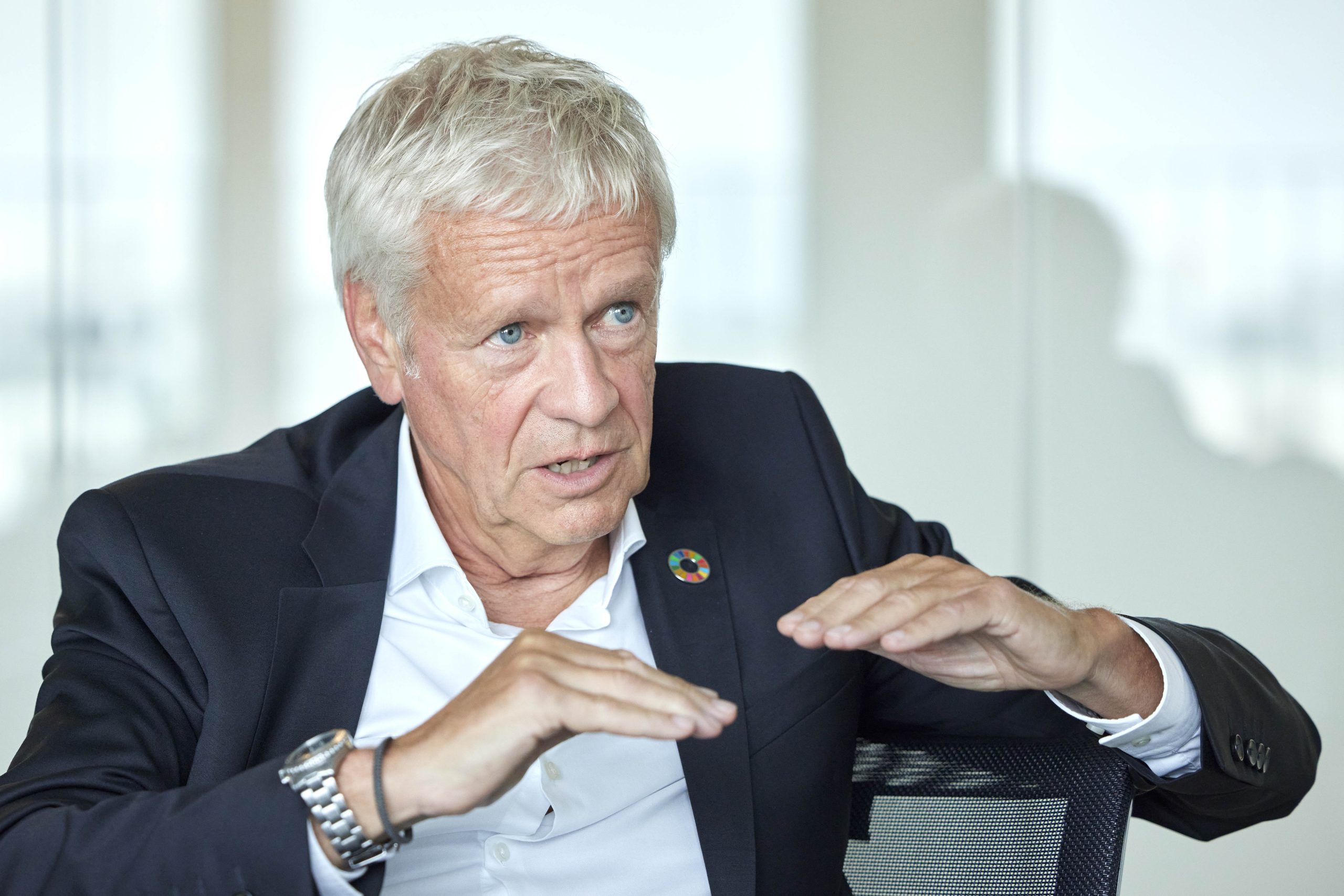
J-BIG: What are the concrete approaches to achieve the goals of CO2-neutrality and “underground resource-free” by 2050?
Henning Ohlsson: Epson is developing and investing in future technologies such as metal moulding. This involves recycling used metals and using them, for example, for spare parts. The recycling process produces a powder that can be used to make 3D metal parts, which are then used in corresponding new parts. A factory is currently being built in Japan to specialise in the production of metal powder from recycled materials. We have also developed our own recycling processes for paper, textiles and other materials.
Another building block in achieving our goals is that we have our specific emissions reduction targets verified by the “Science Based Targets” initiative – we set ourselves science-based targets and allow ourselves to be measured against them. We are fully transparent about this, publishing not only our targets but also our progress against them in our annual sustainability reports. One big step is that we are moving to 100% renewable electricity globally. The plan is for all factories, all national companies and all regions to meet this target by December.
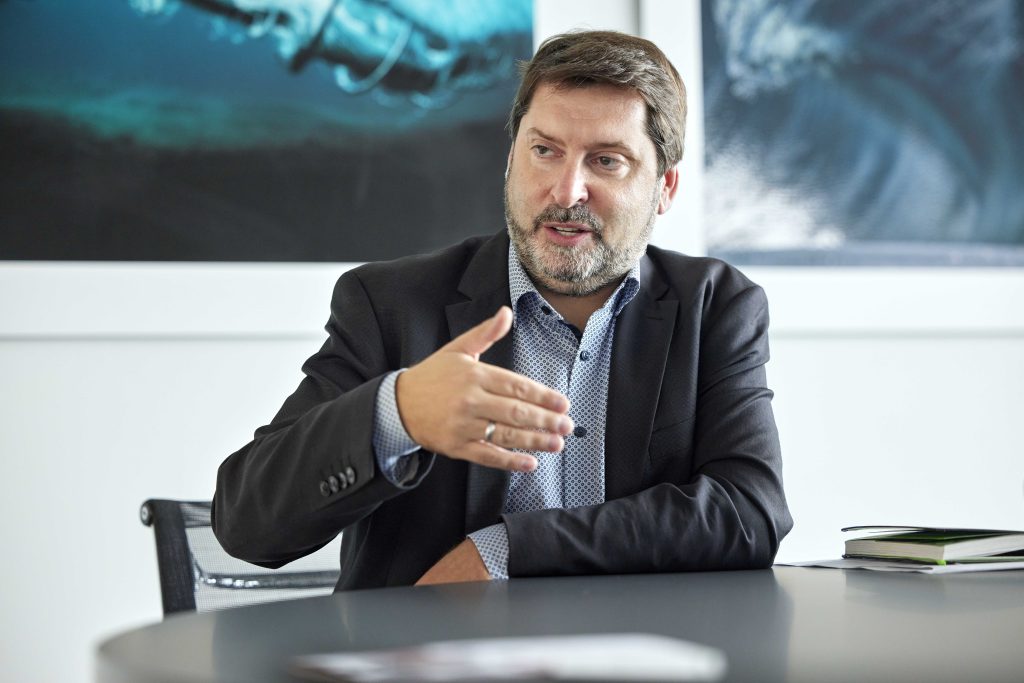
J-BIG: How did Epson come to Germany?
Henning Ohlsson: In the 1970s, we first had a sales organisation in Germany, which did very well selling dot matrix printers. Then, in 1979, a subsidiary was established in Düsseldorf, Epson Deutschland GmbH. At the same time, we opened a branch in Spain and then in Italy – the largest markets in Europe at the time. At first we had our logistics centre in Neuss, today our large logistics centre for Europe is in Bedburg in North Rhine-Westphalia. The European head office is in Amsterdam. Epson has established itself strongly in Germany with its products, first with dot matrix printers, then with inkjet printers in the consumer sector and then also in the industrial sector. Today we are the region with the highest turnover in Europe.
J-BIG: Expressed in figures: How many people does Epson employ worldwide? How many in Germany? And what about turnover?
Henning Ohlsson: Epson employs almost 80,000 people worldwide in 79 subsidiaries, of which around 2,000 are in Europe. Epson Deutschland GmbH is responsible for sales in Germany, Austria and Switzerland and employs around 290 people. Worldwide, we have a turnover of 8.6 billion euros. Europe accounts for around a quarter of this, with Germany being the strongest market in Europe.
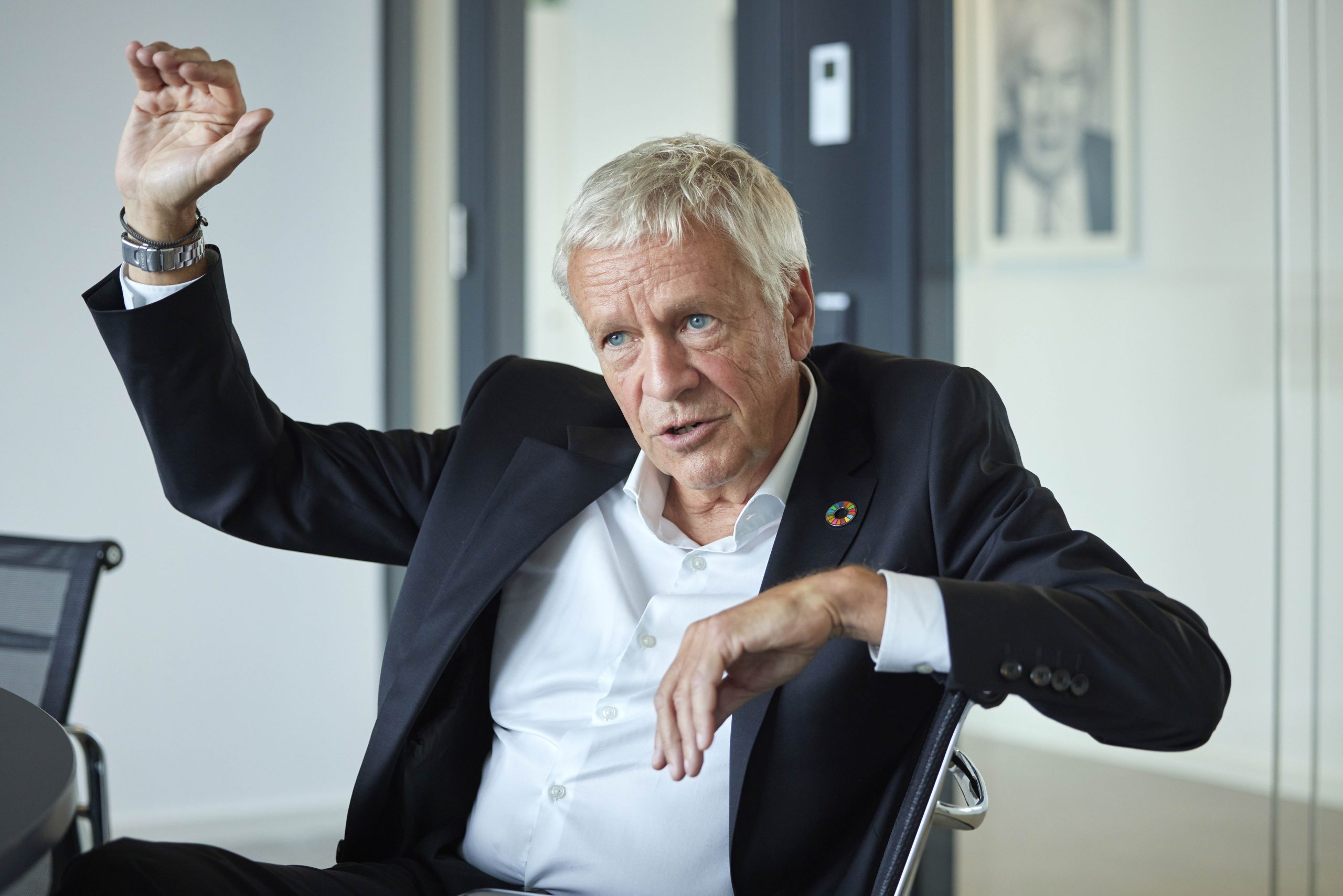
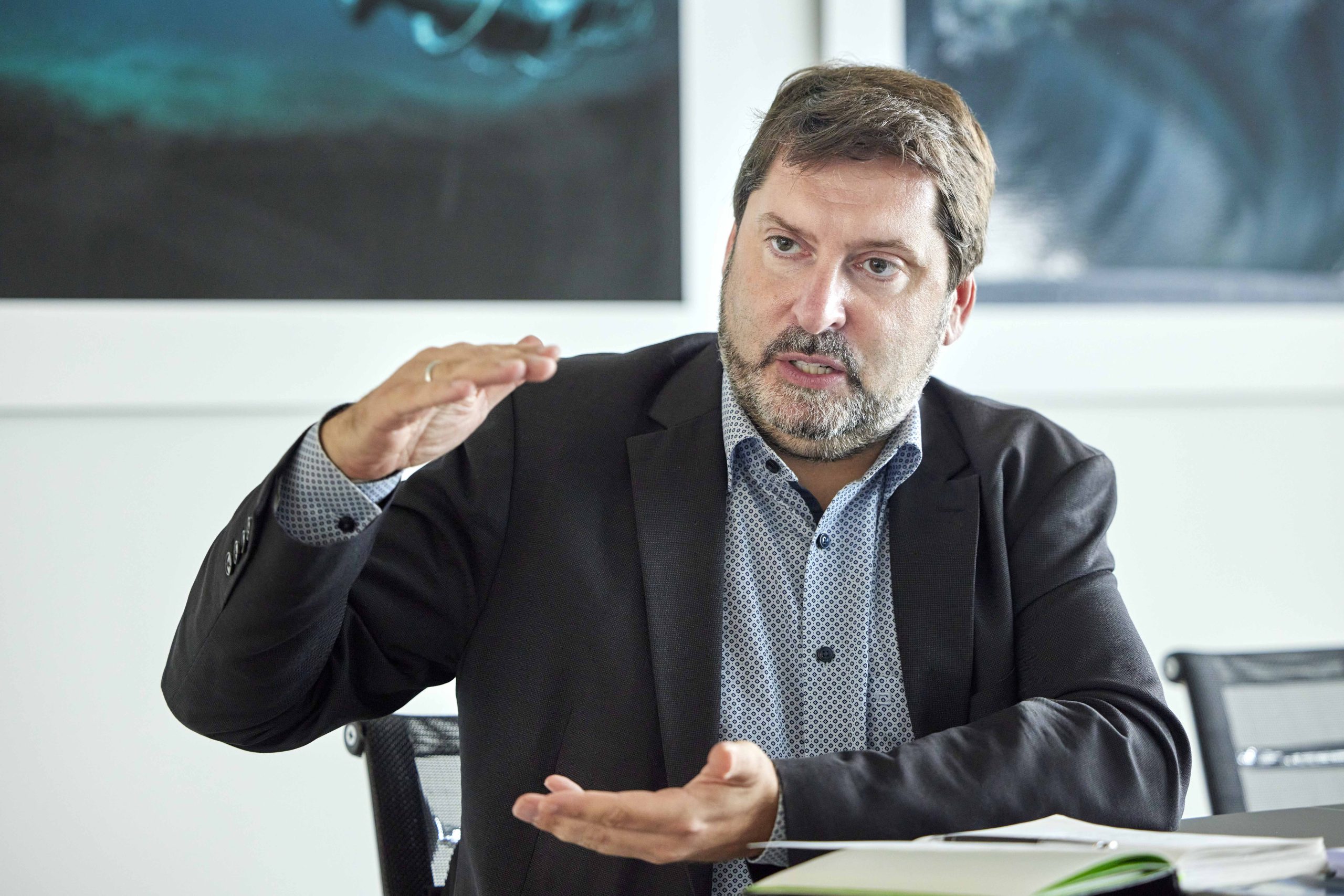
J-BIG: Was there a peak in the number of employees at Epson Deutschland GmbH that reflected the peak in the printing market?
Henning Ohlsson: Of course, the number of employees has fluctuated over the years, and there is no doubt that the demand for printing equipment was very high in the 1980s and 90s. But our turnover has not declined, even in the era of the “paperless office”. We have continued to expand our business and develop new products. As a result, despite the changes in working methods brought about by digitalisation and automation, we have been able to create new jobs and currently have the highest number of employees in our German history.
J-BIG: What is Epson’s strategic direction today?
Henning Ohlsson: As a technology company, we primarily sell hardware, but we want to offer more services in the future. Our focus is on the needs of our customers, and the service should make it even easier to use the technology. This means, for example, that instead of buying the hardware, customers can buy the service as they need it – an on-demand approach. This does not mean that we will move completely to services in the future. The technologies will still be needed and we will continue to develop them.
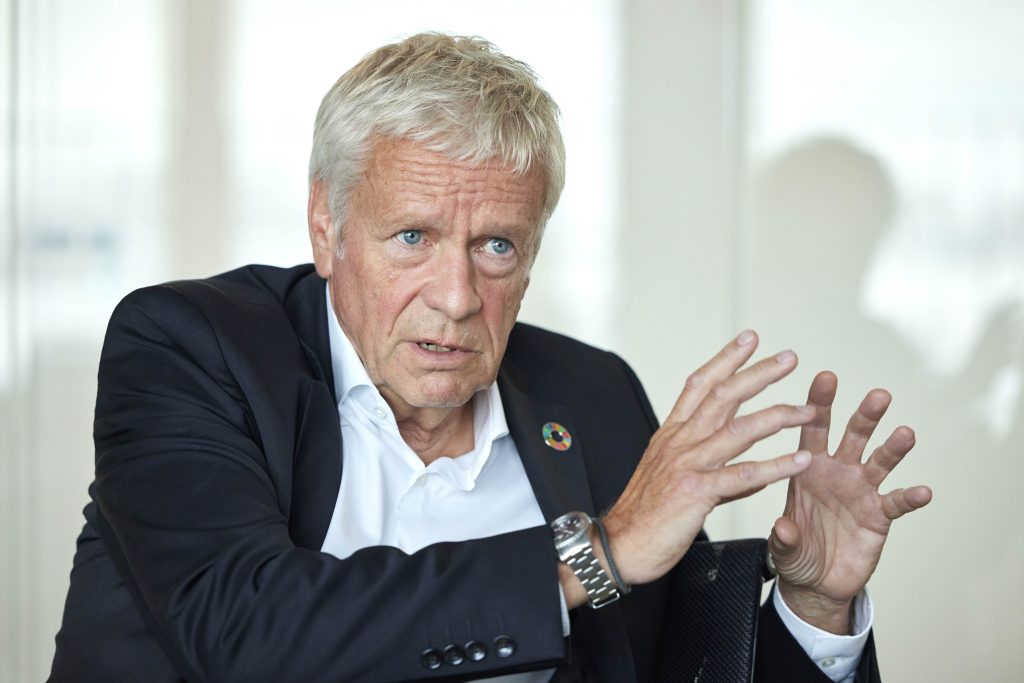
One example: We are increasingly moving away from the ink cartridge model. Ink cartridges cost customers a lot of money. The Japanese head office has spent many years researching alternative solutions, and we have succeeded in breaking the classic model in the printer market – cheap hardware, expensive cartridges. The EcoTank printers use refillable ink tanks – the hardware is slightly more expensive, but cartridges are no longer needed. We have already sold 80 million of these tank systems and demand is high. The tanks are refillable and one set of ink can print up to 2,300 photos, for example. Consumers should be able to print without worrying about running out of ink.
Sustainability is also our business strategy for the future, and top management in Japan is fully behind it. Our CEO, Yasunori Ogawa, has made this a top priority for our company. For our global technology group, sustainable management is not a trend, but the continuation of a long-standing commitment to the environment and society that also stems from the company’s Japanese roots.
This focus on sustainability is reflected in our technology: we pay close attention to energy efficiency during development, as printers naturally consume electricity. Our inkjet printers print using electrical impulses and do not require heat (heat-free technology). There are laser printers that heat up to 200 degrees to melt the toner. In terms of power consumption, there is a huge difference between laser and inkjet printers: laser technology uses significantly more electricity than inkjet technology.
We have developed a calculator that allows our customers to calculate how much electricity they can save by switching from laser printing to Epson inkjet technology, and what the CO2 emissions are compared to other technologies. There are international measurements for this, such as the TEC (Typical Electric Consumption) value, which we can use to calculate specific savings for our customers. The tool we have developed has been very well received by our customers. Sustainability reporting is becoming increasingly mandatory in many companies, and the tool is proving very useful.
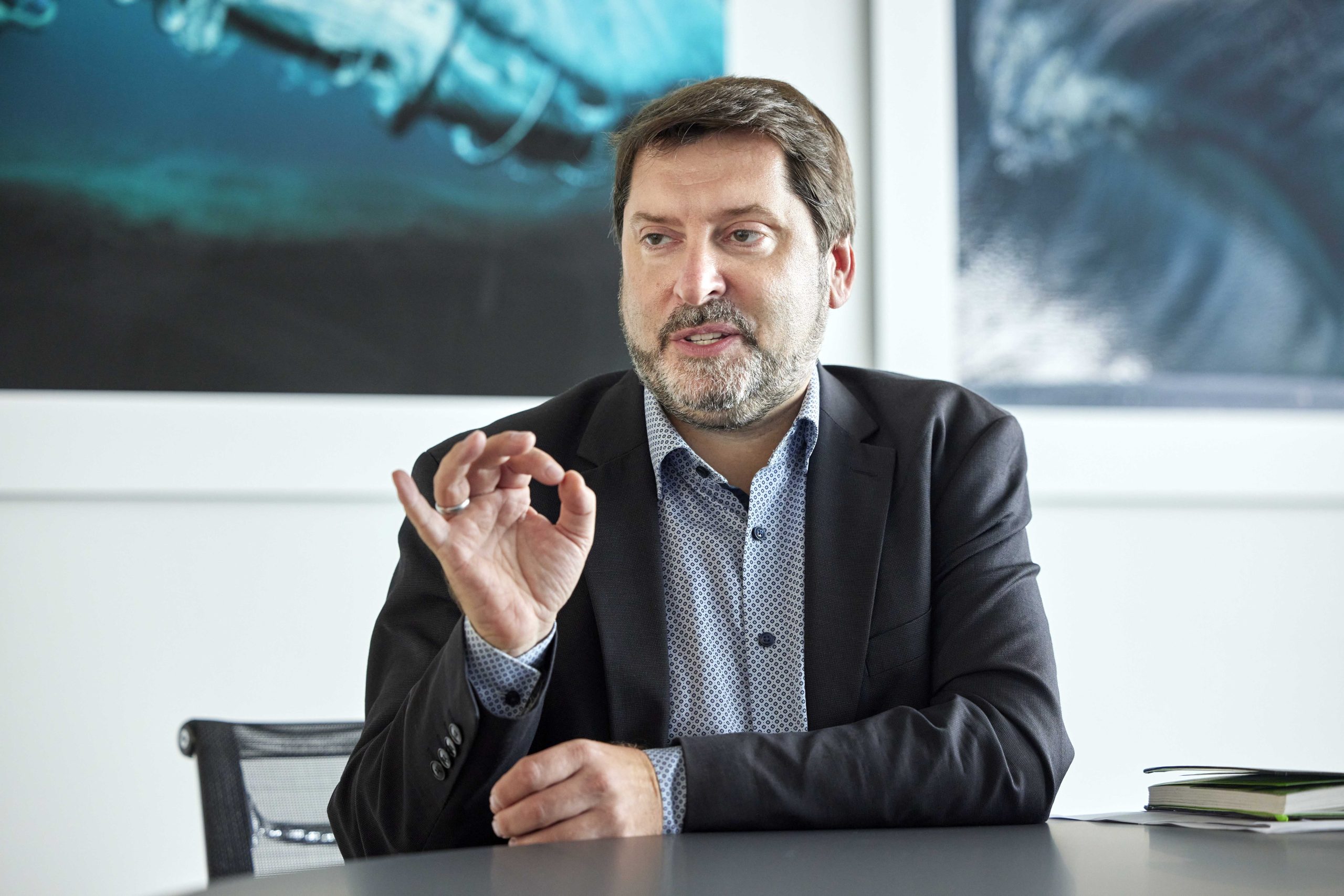
J-BIG: How does the German subsidiary interact with the Japanese head office?
Henning Ohlsson: We have a very good relationship with the Japanese head office and a regular dialogue. The exchange is supported by the expats. Here in Germany, for example, we have an expat in the robotics division who takes our concerns to Japan and helps overcome the language barrier.
Particularly in my second role as Sustainability Director for Europe, I have always worked closely with our Japanese colleagues. We have regular sustainability forums where we provide input from the European side. Here in Europe and in Germany, we have our finger on the pulse when it comes to sustainability: there are many new regulations and innovative solutions. For example, the European Green Deal, which aims to reduce net greenhouse gas emissions in the European Union to zero by 2050, or the “right to repair”: defective products should no longer end up in the bin, but should be repaired.
We bring all this to Japan and work closely with the Japanese head office at this interface. On this basis, we develop solutions such as how to use more recycled material in our products or how to expand the take-back systems. Japanese companies are traditionally sustainable and long-term oriented. This is also reflected in our collaboration. We have been able to build up a good basis of trust over many years, which facilitates open communication. We are pleased to be able to use our European perspective to further advance Epson’s commitment to the environment.
J-BIG: How did you manage to build such a good relationship with the Japanese head office?
Henning Ohlsson: In my 20 years at Epson, I have always spoken my mind and taken a stand. My loyalty to the company was 100 percent. Even in tough discussions, I never distanced myself from Epson, even in critical situations, but placed my trust in my colleagues. It was always important to me that Epson Germany was not just a “hand” of Epson Japan. Germany is Epson’s most important location in Europe and should also help shape the future of the company. The management has changed considerably and our cooperation has been further strengthened. In addition, the Japanese head office is well aware of the importance of the subsidiaries in Europe, as customers usually have more confidence in local management than in a distant head office.
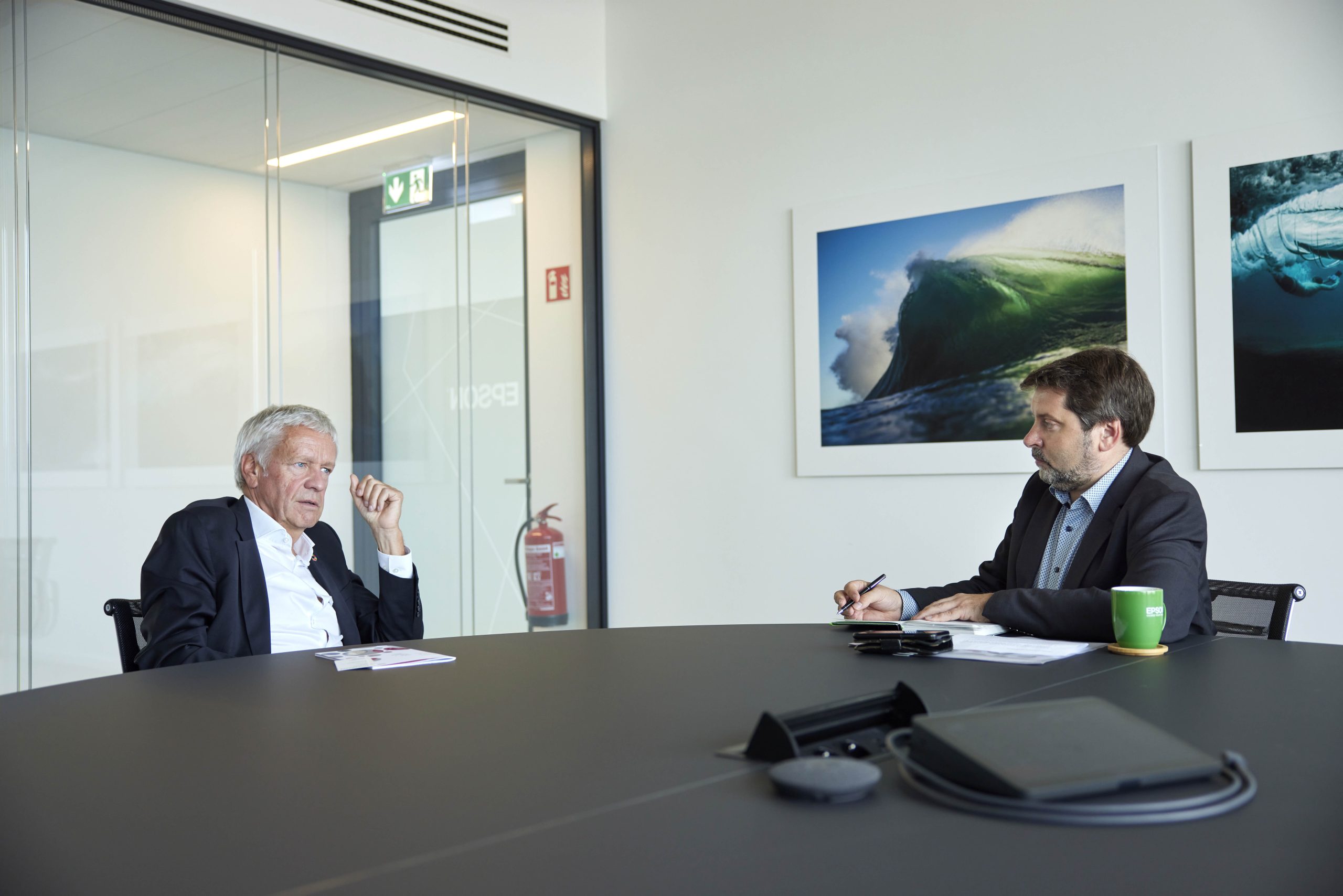
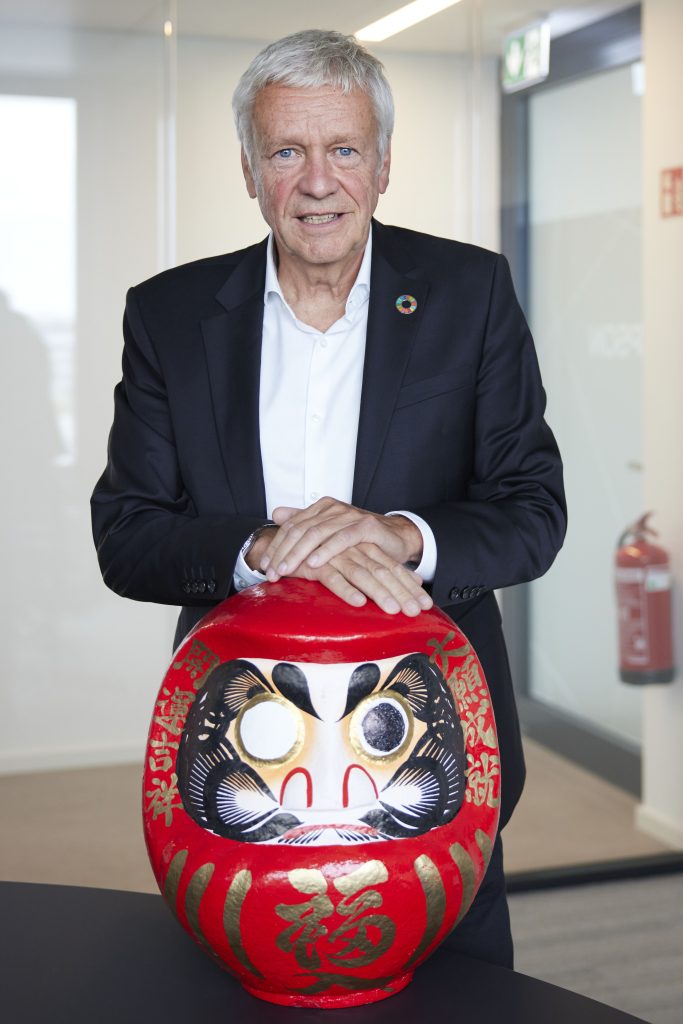
J-BIG: Is there an overarching cultural aspect at Epson that characterises the entire company?
Henning Ohlsson: During my time at Epson, I have noticed that the company’s philosophy and strong commitment to the environment are supported by all employees. We have also learned a lot from Japanese precision and motivation. We have also set these standards for Epson in Europe. The Japanese mentality of solidarity has also shaped Epson outside Japan and strengthened the company’s cohesion worldwide.



